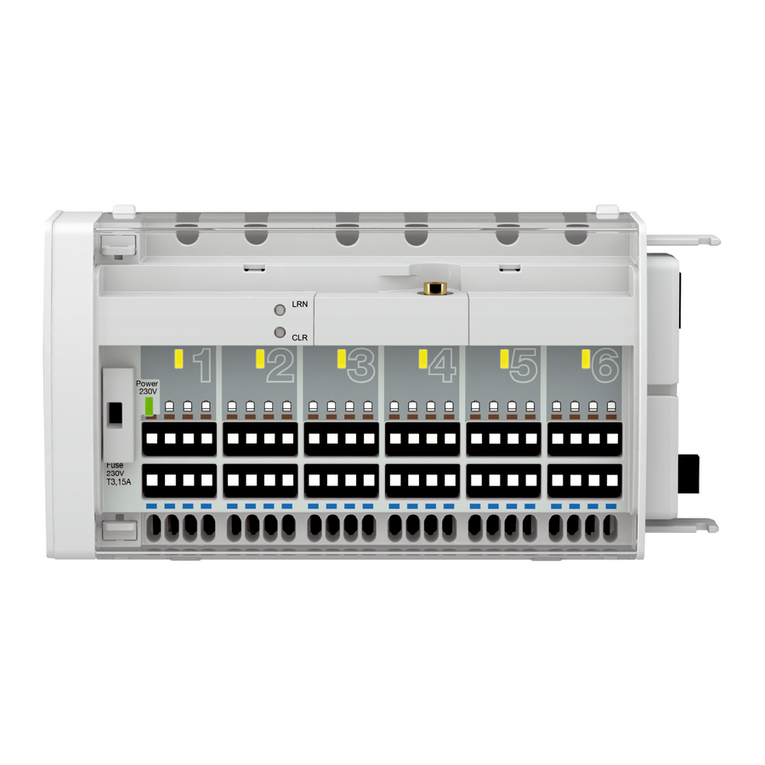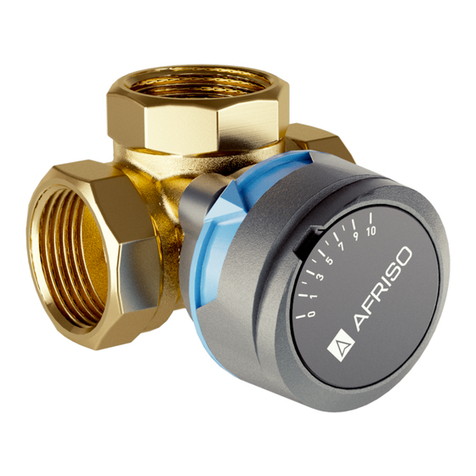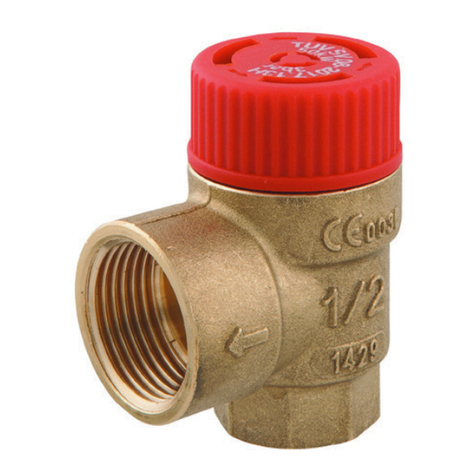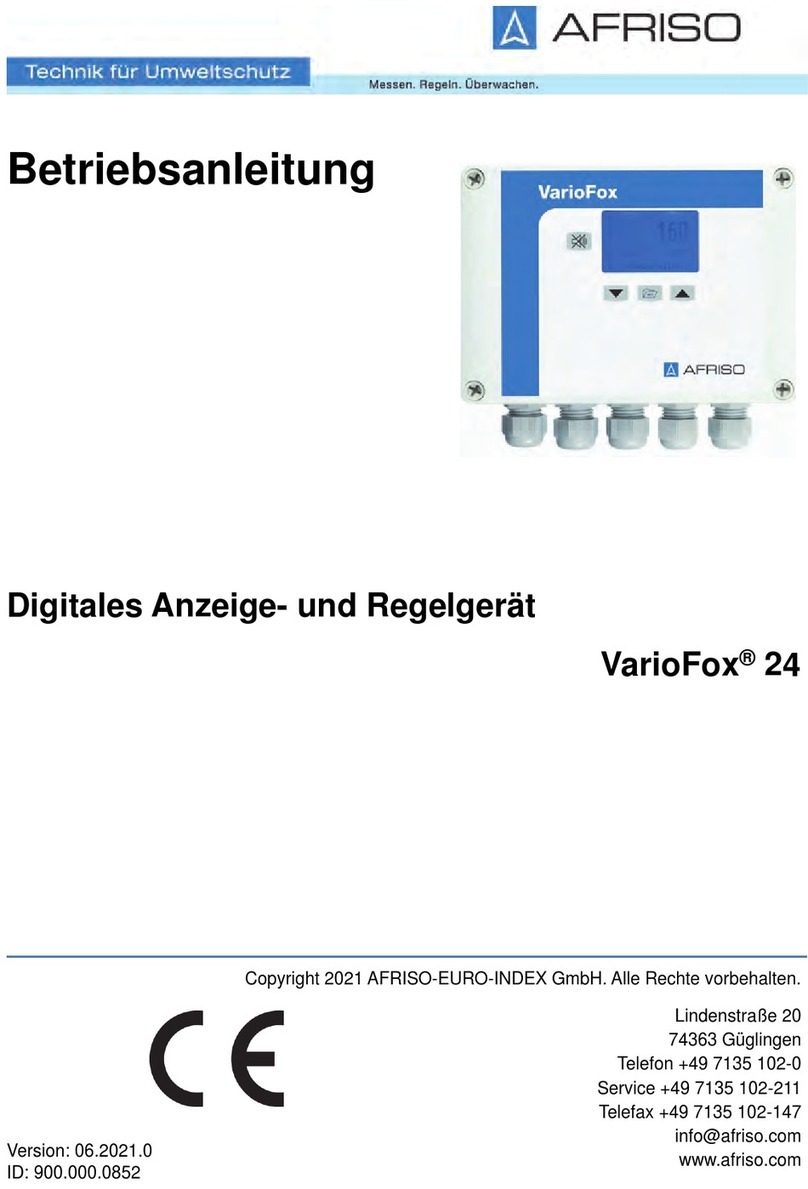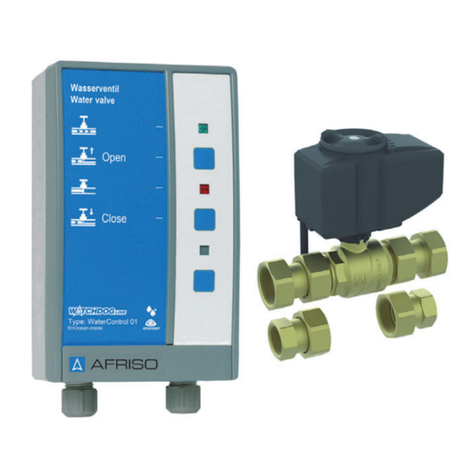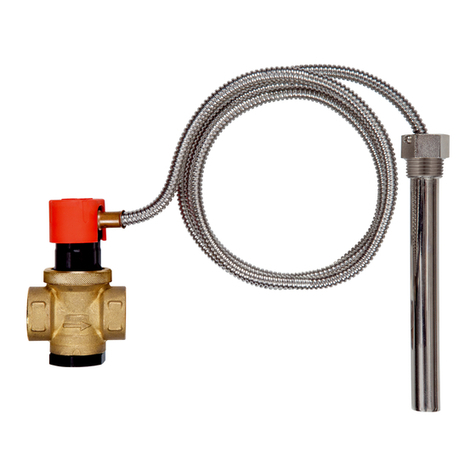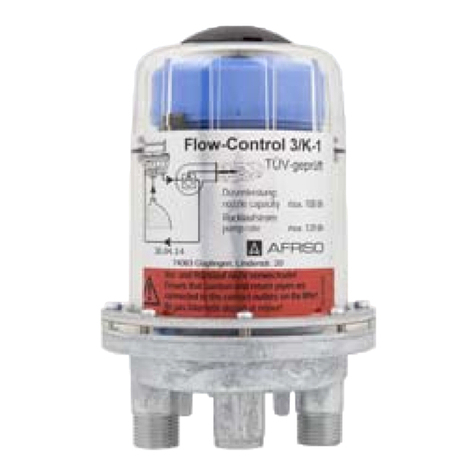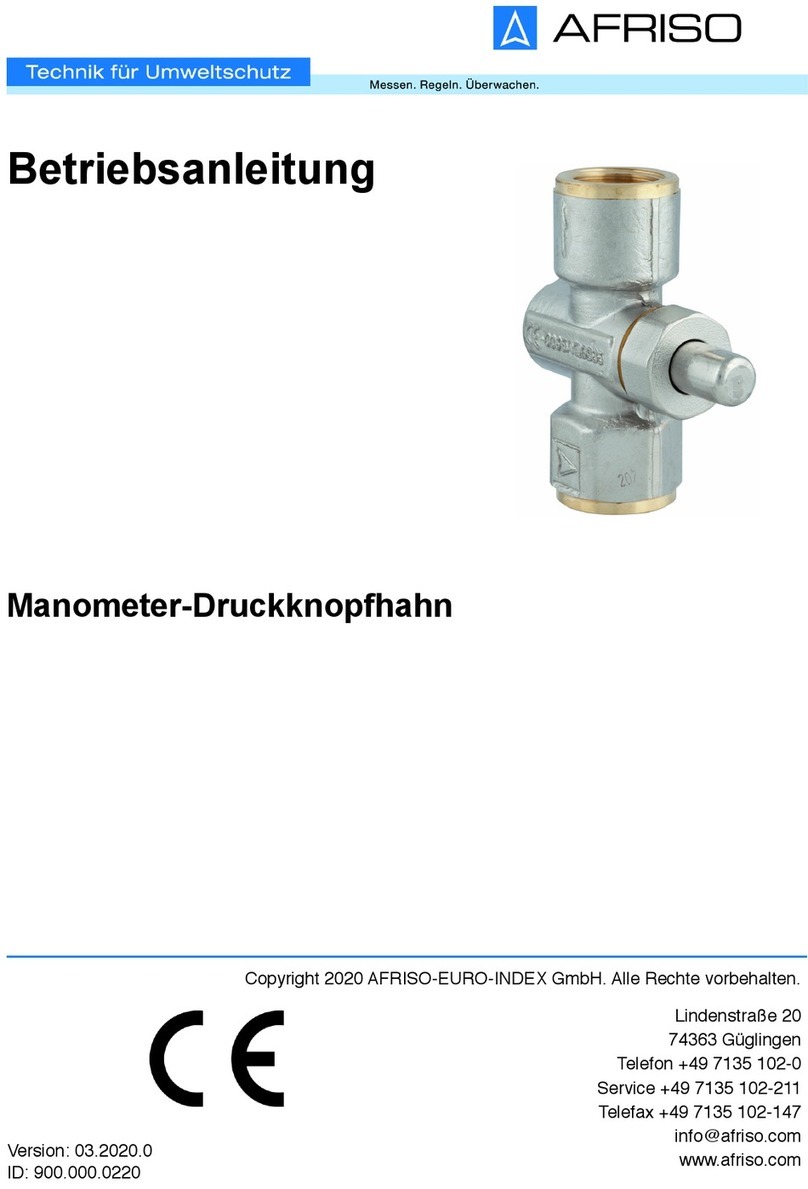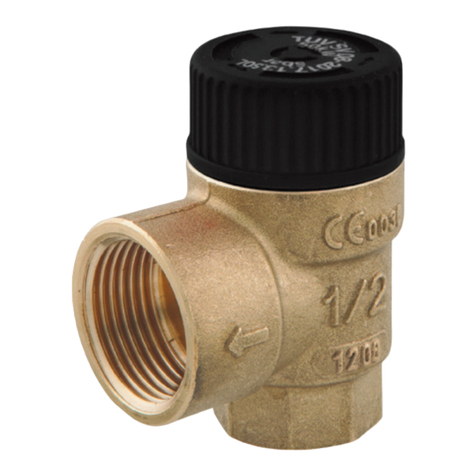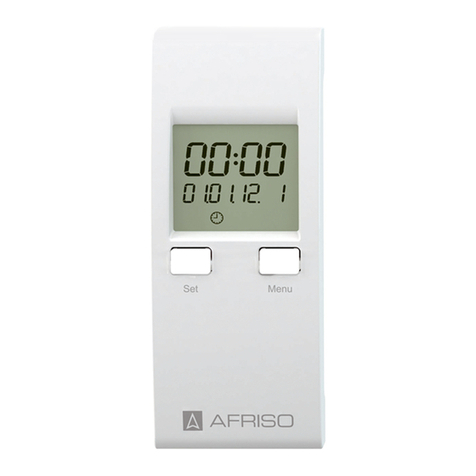
PRZYKŁADOWE SCHEMATY APLIKACYJNE
Step Position "L"
- hot medium from le side
Position "R"
- hot medium from right side Action to be taken
Orientation
of the valve in
installation
R
Determine the orientation
of the valve in the system
and remove the knob and
blue limiting ring.
Position of
the closing
element (view
from the front
of the valve)
Position the closing
element midway between
the hot water inlet and
the cold water inlet to the
valve. The closing element
moves ° range between
these connections.
Application
of the blue
limiting ring
Position the limiting ring
so that the indicator is
midway between the hot
water inlet and the cold
water inlet to the valve.
Application of
the knob
Position the knob onto the
white adapter. The knob
only fits in one position.
Scale selection
L
R
Select the appropriate
side and place the lid
with the scale. on the
scale means the valve is
fully closed (no hot water
supply) and fully open
(no cold water supply).
Kvs lever
position (in
maximum
setting) (view
from the
underside of
the valve)
Unscrew the screw which
is holding the red lever on
the underside of the valve,
and then replace the lever
so that the black coding
pin is in the "L" or "R"
position. Tighten the lever
with the screw.
Selecting
and reading
the correct
Kvs value
(example)
Manually set the
appropriate Kvs value
for the installation.
See section "VALVE
SELECTION AND Kvs
Setting" for guidelines.
Installation
of the valve in
the system
Install the valve in
the system using
a appropriate seal.
INSTRUCTION MANUAL ..
-way rotary mixing valves
ARV Vario ProClick
Art. Nr: 13 362 20, 13 382 20, 13 384 20,
13 385 20, 13 386 20, 13 387 20
AFRISO Sp. z o.o. Customer Service Team
Szałsza, ul. Kościelna tel.
- Czekanów fax
www.afriso.pl zok@afriso.pl
NOTE
The product may only be used if you have fully read and understood these operating instructions. The manual is
also available on the AFRISO websites in the Internet.
WARNING!
The ARV Vario ProClick mixing valve may only be installed, commissioned, and dismantled by trained
personnel.
Changes and modifications carried out by unauthorised persons may cause danger and are prohi-
bited for safety reasons.
Risk of burns from hot medium! All installation and maintenance work must be carried out aer
the system has cooled down.
APPLICATION
ARV Vario ProClick -way mixing valves are designed for heating and cooling installations. They are usually installed
on the system feed or return to the heat source. They mix the medium flow in the right proportions to obtain the
required temperature of the medium. They can also act as switching valves between two parts of the system.
DESCRIPTION
ARV Vario ProClick -way rotary mixing valves have a body made of brass. The closing element and internal
components are made of plastic. It is possible to adjust the Kvs coeicient value on each valve. A dedicated lever
on the underside of the valve is used to change this parameter. The connections on internal threaded models are
octagonal. The valves are equipped with knobs for manual adjustment and angle limiters. The rotating scale on
one side is printed with the graduation " to " and the symbol "L", while the other side has the graduation "
to " and the symbol "R". This allows the valve to operate in dierent mounting positions. The knob is made of
non-slip material. For the connection of ARV ProClick valves to ProClick actuators or controllers, there are plastic
parts under the knob. With these parts, ProClick actuators and controllers are mounted without using any tools.
KVS VARIO FUNCTION
ARV Vario ProClick -way rotary mixing valves enable to select the optimum Kvs coeicient value for a particular
installation and subsequently changed. The correct Kvs value is a key aspect to the correct operation of the mixing
valve. If the Kvs value is too low, this will result in increased pressure losses through the valve and thus throttle the
flow in the system. This may result in underheating of rooms. Too high value of the Kvs coeicient will result in too
small pressure drop across the mixing valve and thus large fluctuations in the temperature of the medium which
feeds the installation. This is particularly unfavourable in the case of surface heating systems. Optimum selection
of the Kvs coeicient enables smooth and economical operation of the whole installation.
CONSTRUCTION
Knob
Valve body with plastic part for mounting ProClick actuator/controller
Fatening on the valve spindle
Adapter screw
Limiting ring with indicator
Adapter with fatening, for ProClick actuator/controller
Double-sided scale
Kvs value adjustment lever
Kvs lever coding pin
Lever fastening screw
Fig.1 Construction of 3-way valves ARV Vario ProClick
BEFORE INSTALLATION
Caution! Pay attention to the position of the closing element, which is on the opposite side to the flattening on
the adapter and on the valve spindle.
!
Fig. 2 Position of the closing element respect to the flattening on the adapter and valve spindle
The ARV Vario ProClick mixing valve is supplied with a fitted plastic knob. In order to prevent plastic components
from damage, we recommend that lid with the scale, the knob and the blue limiting ring should be removed from
valve before mounting the valve in installation. These elements are mounted with a snap. If you have problems
removing the knob, you can gently lever it o with a flathead screwdriver.
VALVE SELECTIONS AND KVS SETTINGS
Caution! The correct Kvs coeicient of the valve must be set before the first start of the installation.
Subsequent change is possible but may be diicult due to lack of free access to the valve.
The size and value of the Kvs coeicient of the mixing valve should be specified in the design of the installation.
In the absence of a design, the valve and the Kvs coeicient can be based on simplified selection charts. The Kvs
selection charts for each valve are included in the appendix to this manual.
The simplified selection procedure goes as follows:
. Determine the heat demand of the installation in kW.
. Select the value for the temperature dierence ∆T between supply and return (e.g. ∆T=K for underfloor
heating; ∆T=K or ∆T=K for radiator heating).
. Run a vertical line from the selected power in kW to the selected temperature dierence ∆T.
. Guide the horizontal line to the end of the coloured box in the diagram on the right.
. Select the smallest Kvs value from those with which the horizontal line in the coloured area intersects. The
coloured field defines the optimal pressure drop in the valve. In typical installations this should be between
and kPa.
. Select the appropriate valve size that enable setting selected value.
The selected valve may be equal or smaller compared to diameter of pipes used in the system. The valve on the
system feed may be two diameters smaller, and on the return to the solid fuel boiler, one diameter smaller than
the nominal diameter of pipes used.
Example: pipe diameter DN is used in the system, so the valve in the system feed should be sized in range of
DN-DN and on the return to the heat source DN-DN.
VALVE IN SWITCHING/DIVERTING FUNCTION
When using the valve in a switching or diverting function, there is no need to change the factory (maximum) Kvs
coeicient setting.
EXAMPLE APPLICATION SCHEMES
Mixing function
L
L
R
1 2
43
page
